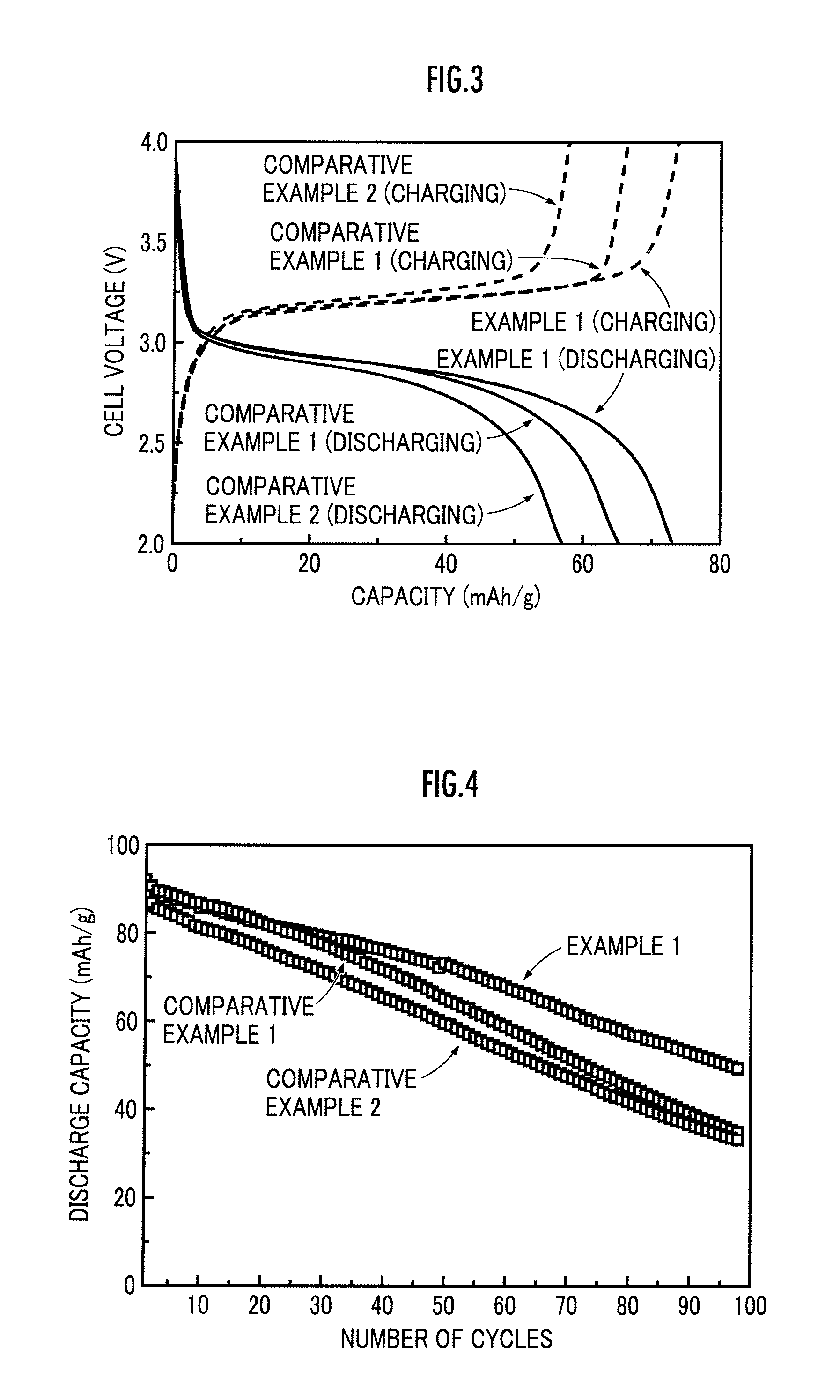Electrolyte-negative electrode structure, and lithium ion secondary battery comprising the same
- Summary
- Abstract
- Description
- Claims
- Application Information
AI Technical Summary
Benefits of technology
Problems solved by technology
Method used
Image
Examples
example 1
[0059][1. Preparation of an Inorganic Particle]
[0060]In the present Example, first, lithium hydroxide monohydrate was subjected to a dehydration treatment by heating in a vacuum atmosphere at a temperature of 350° C. for 6 hours to thereby obtain anhydrous lithium hydroxide. Lanthanum oxide was subjected to a dehydration and decarbonation treatment by heating in the air atmosphere at a temperature of 950° C. for 24 hours.
[0061]Then, zirconium oxide was added to and mixed with the obtained anhydrous lithium hydroxide and the dehydrated and decarbonated lanthanum oxide in a molar ratio of Li:La:Zr=7.7:3:2, and crushed and mixed using a planetary ball mill at a rotation frequency of 360 rpm for 3 hours to thereby obtain a mixed raw material.
[0062]The obtained mixed raw material was accommodated in an alumina-made crucible, and held and primarily fired in the air atmosphere at a temperature of 900° C. for 6 hours to thereby obtain a powdery primarily fired material.
[0063]Then, the obtai...
example 2
[0086]In the present Example, an electrolyte-negative electrode structure 7 was formed wholly the same as in Example 1, except for preparing a first paste by mixing the inorganic particle, the SBR aqueous dispersion liquid and the CMC aqueous solution in a mass ratio of 95:2.5:2.5 in terms of solid content. In the obtained electrolyte-negative electrode structure 7, the volume ratio of the inorganic particle to the organic polymer comprising the SBR and the CMC was 54.4:45.6 in terms of solid content.
[0087]A lithium ion secondary battery 1 was fabricated wholly the same as in Example 1, except for using the electrolyte-negative electrode structure 7 obtained in the present Example, and the cycle performance was evaluated. The discharge capacity retention at the 80th cycle to a discharge capacity at the 10th cycle is shown in Table 1.
example 3
[0088]In the present Example, an electrolyte-negative electrode structure 7 was formed wholly the same as in Example 1, except for preparing a first paste by mixing the inorganic particle, the SBR aqueous dispersion liquid and the CMC aqueous solution in a mass ratio of 99:0.5:0.5. In the obtained electrolyte-negative electrode structure 7, the volume ratio of the inorganic particle to the organic polymer comprising the SBR and the CMC was 90.9:9.1 in terms of solid content.
[0089]A lithium ion secondary battery 1 was fabricated wholly the same as in Example 1, except for using the electrolyte-negative electrode structure 7 obtained in the present Example, and the cycle performance was evaluated. The discharge capacity retention at the 80th cycle to a discharge capacity at the 10th cycle is shown in Table 1.
TABLE 110th cycle80th cycleDischarge Capacity(mAh / g)(mAh / g)Retention (%)Example 185.757.266.7Example 270.343.461.7Example 364.142.566.3Comparative86.645.452.4Example 1Comparative8...
PUM
 Login to view more
Login to view more Abstract
Description
Claims
Application Information
 Login to view more
Login to view more - R&D Engineer
- R&D Manager
- IP Professional
- Industry Leading Data Capabilities
- Powerful AI technology
- Patent DNA Extraction
Browse by: Latest US Patents, China's latest patents, Technical Efficacy Thesaurus, Application Domain, Technology Topic.
© 2024 PatSnap. All rights reserved.Legal|Privacy policy|Modern Slavery Act Transparency Statement|Sitemap



